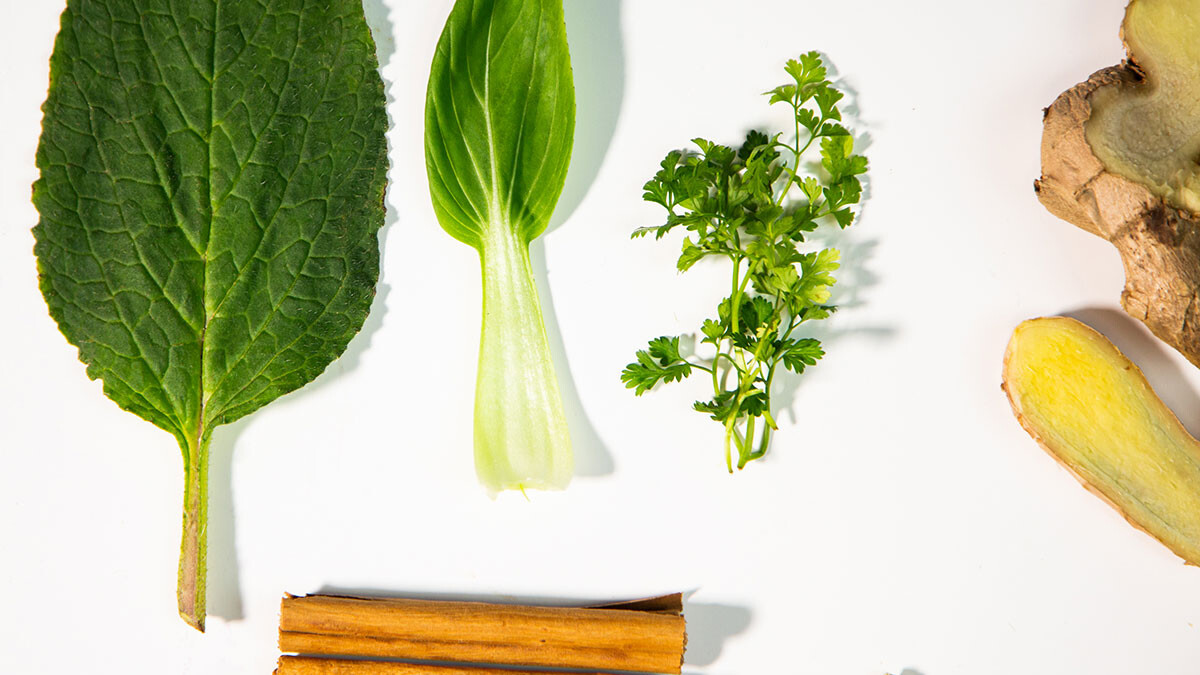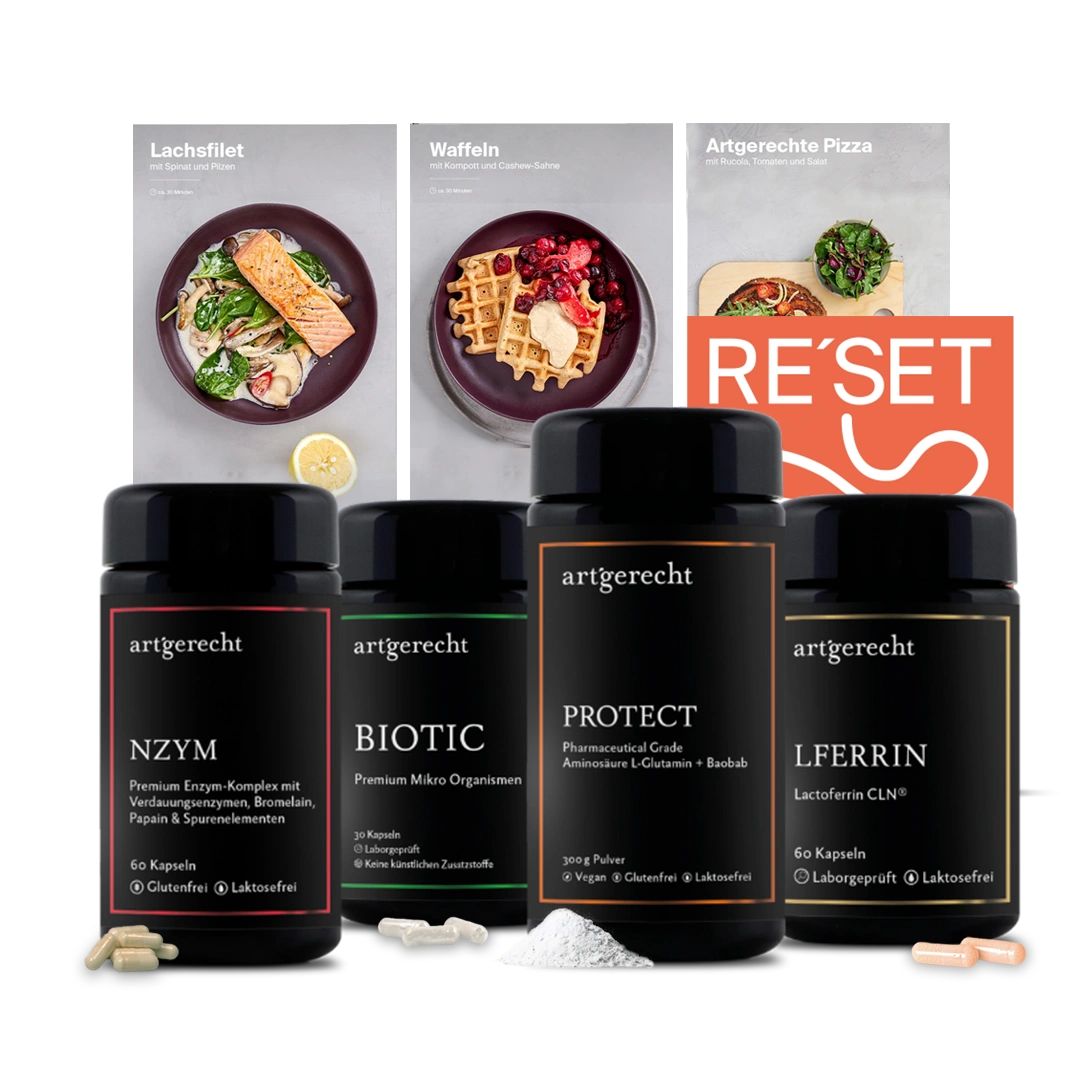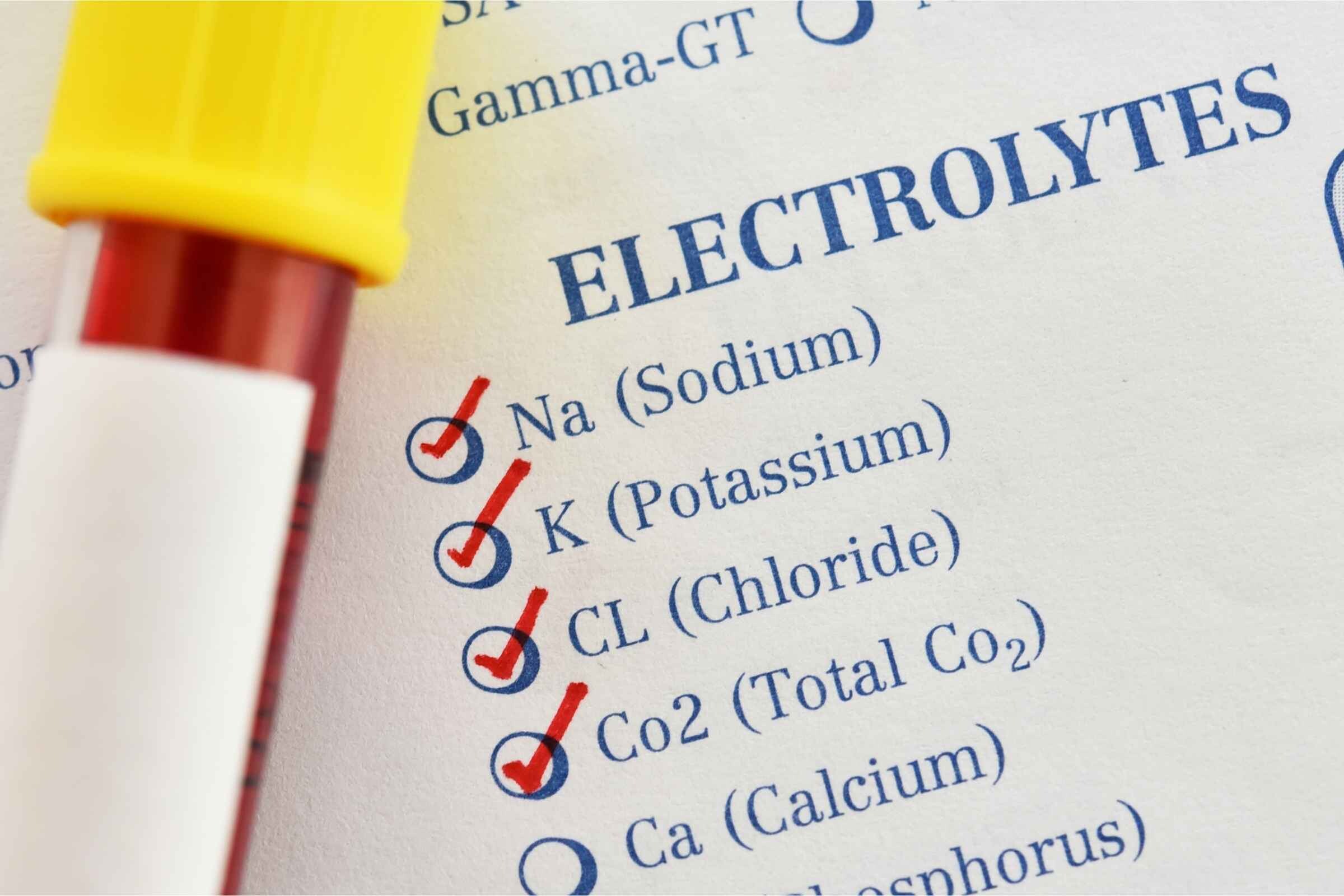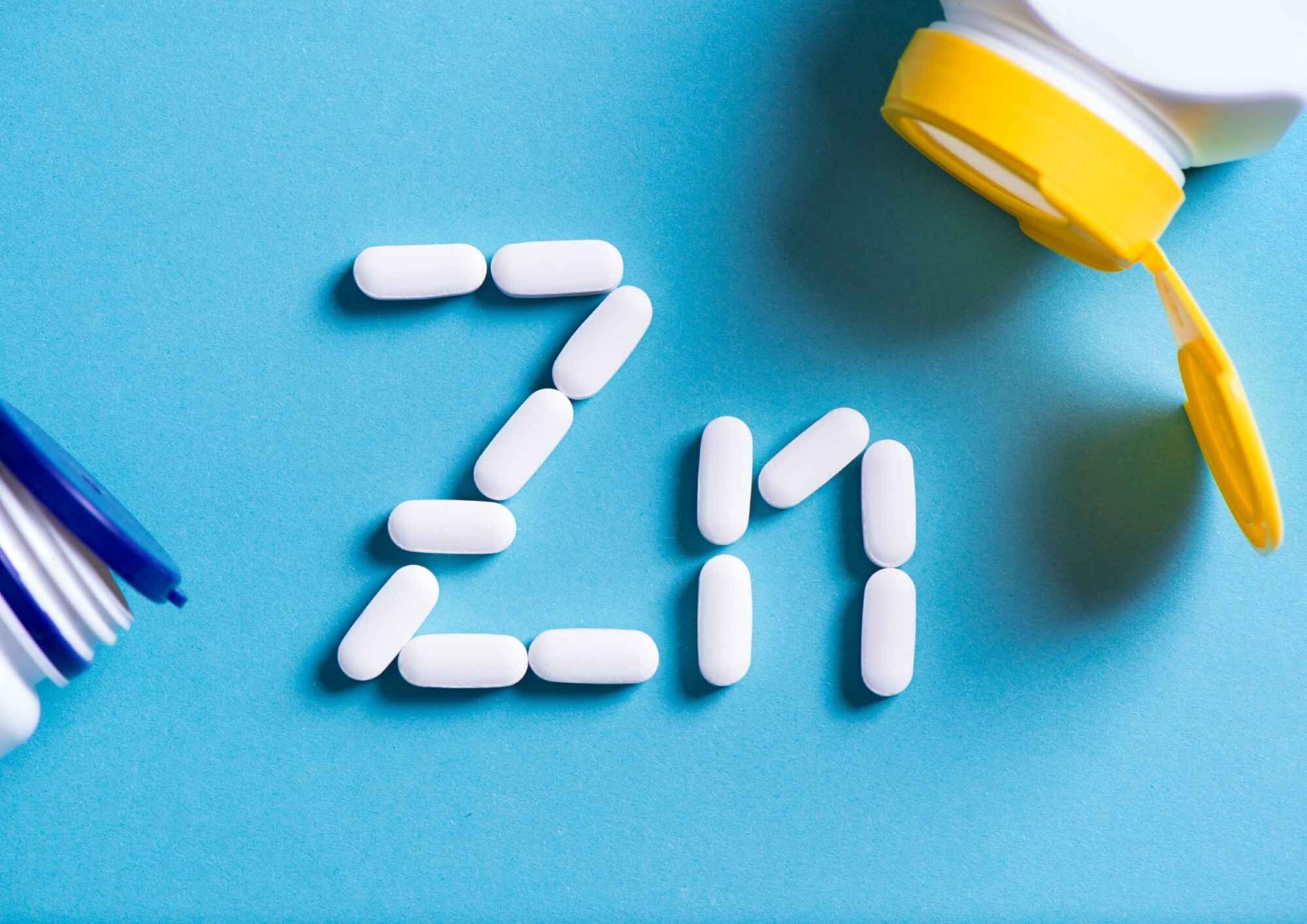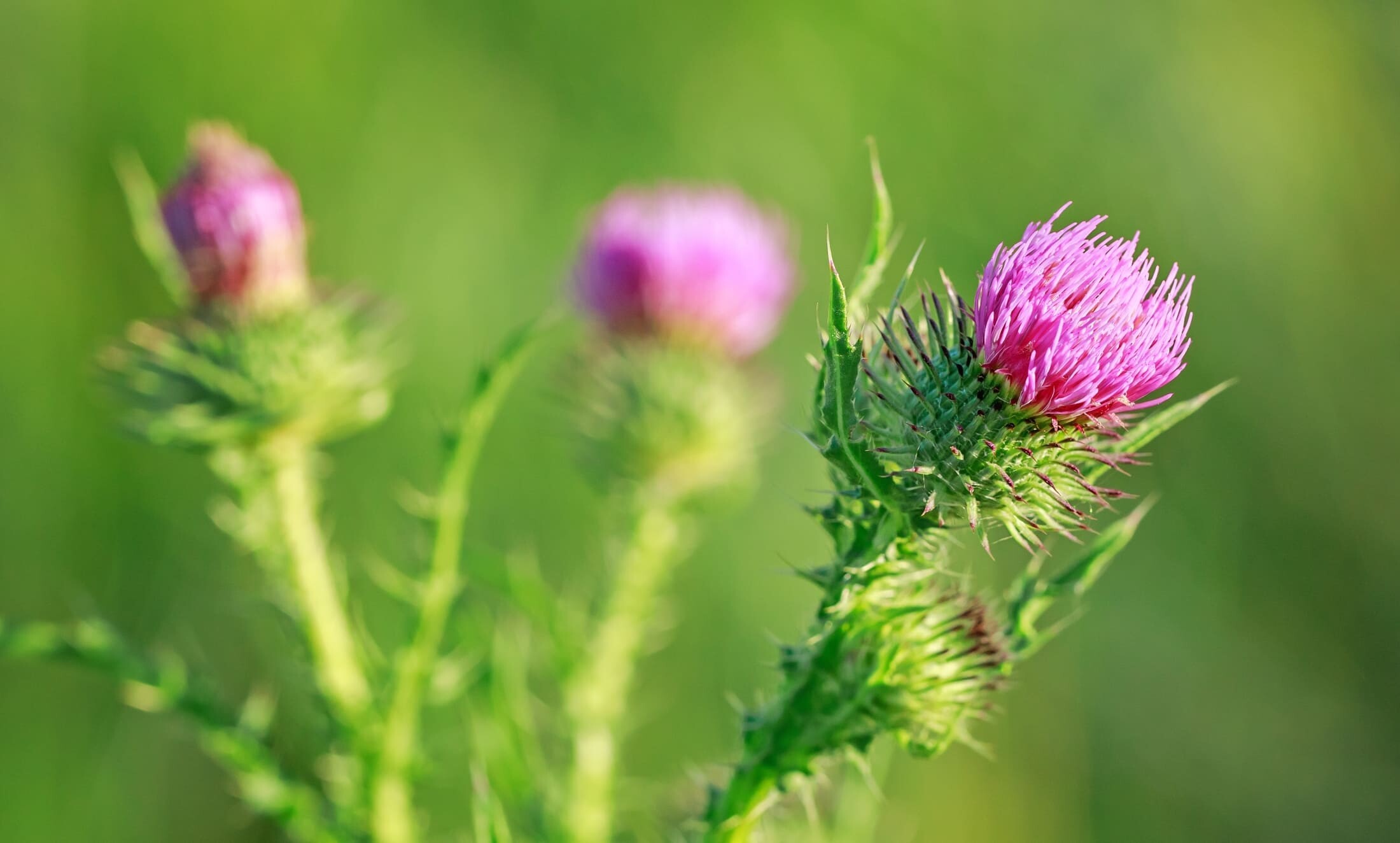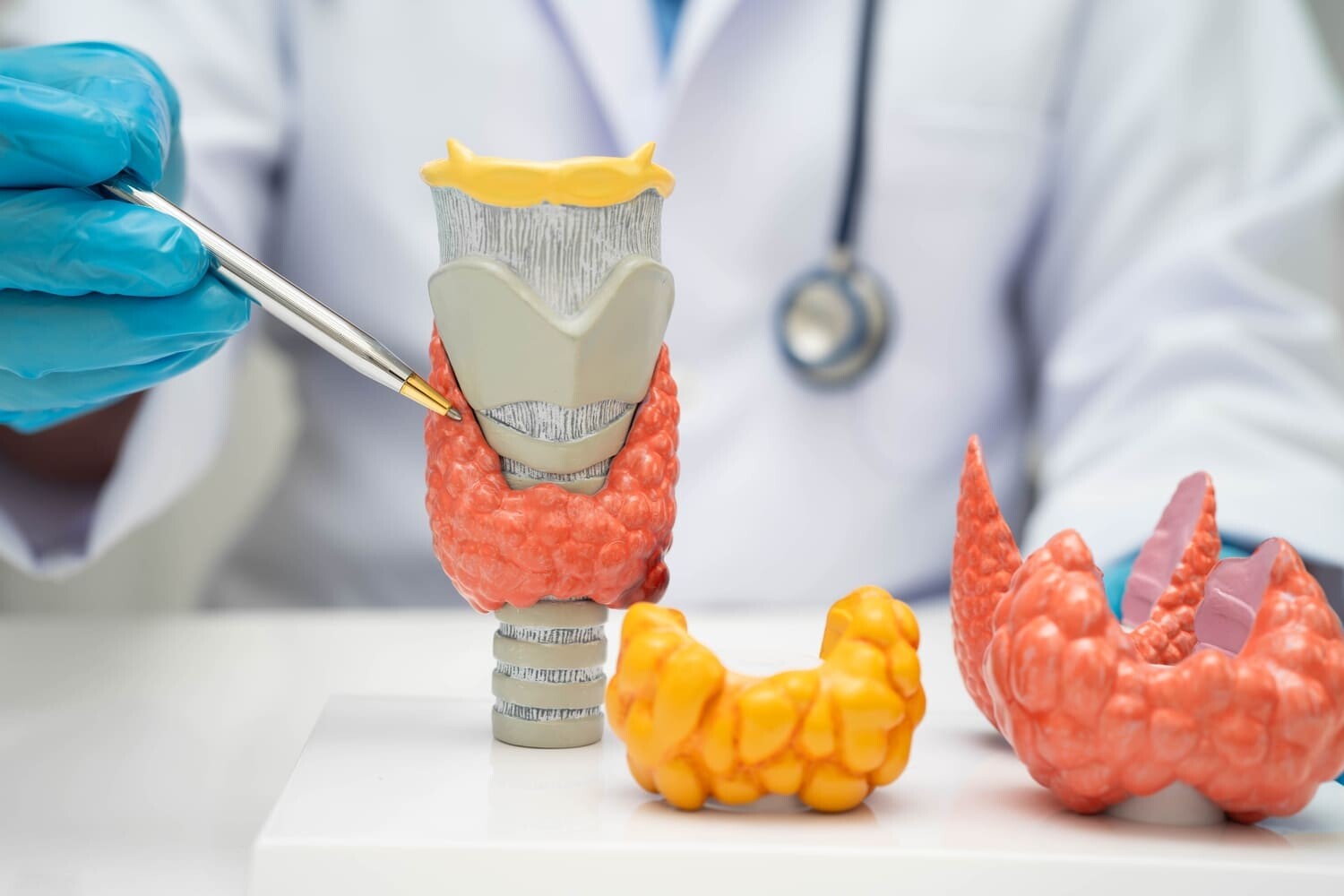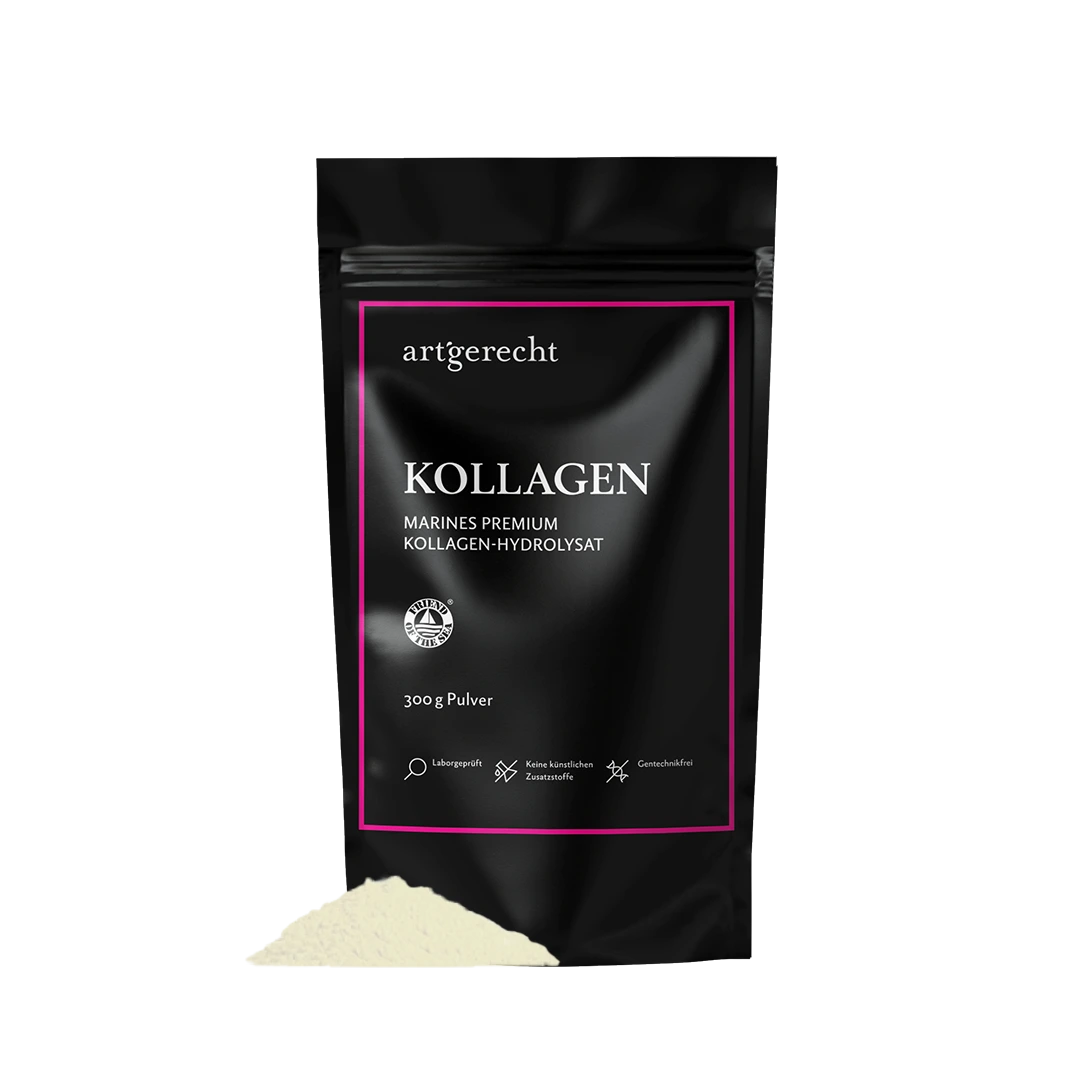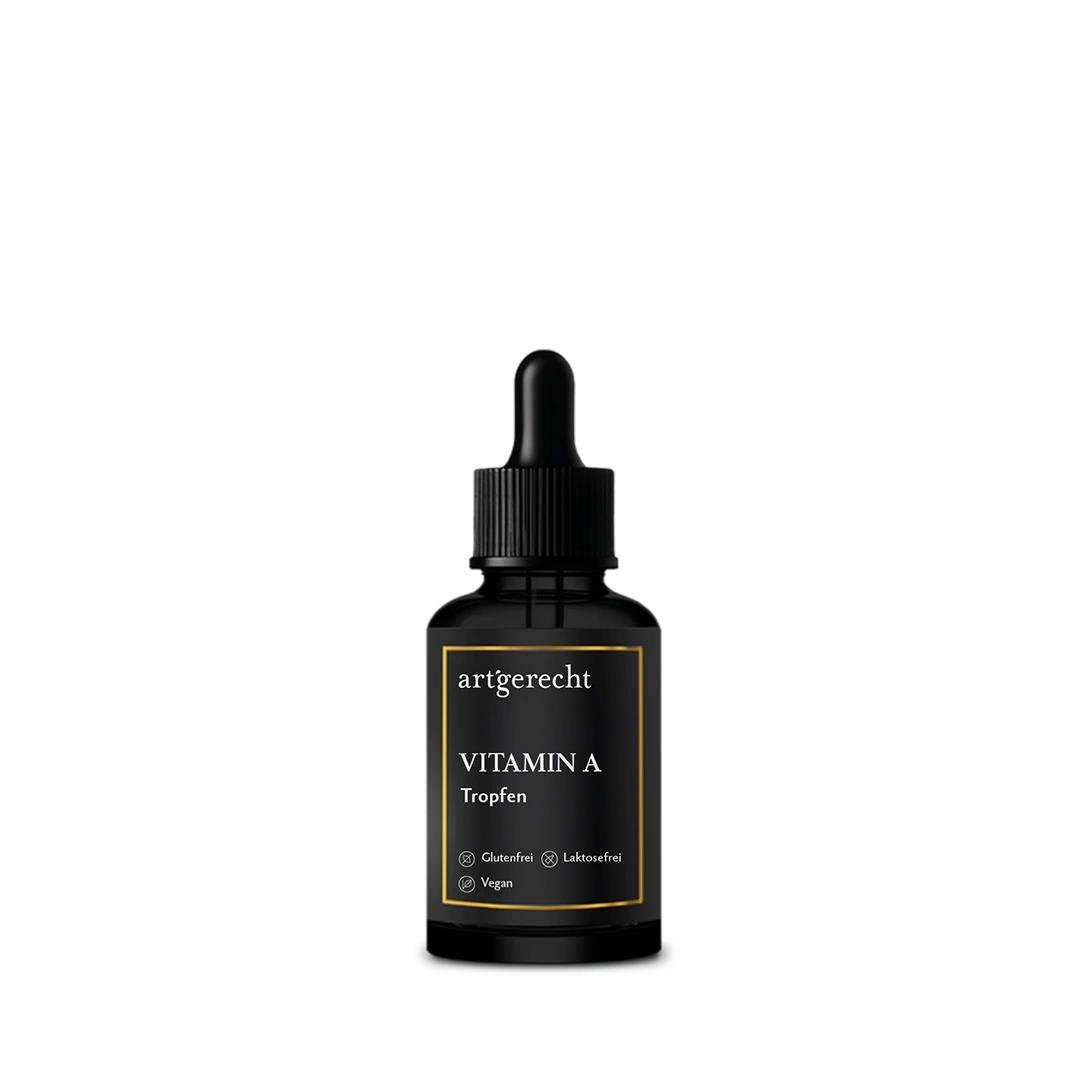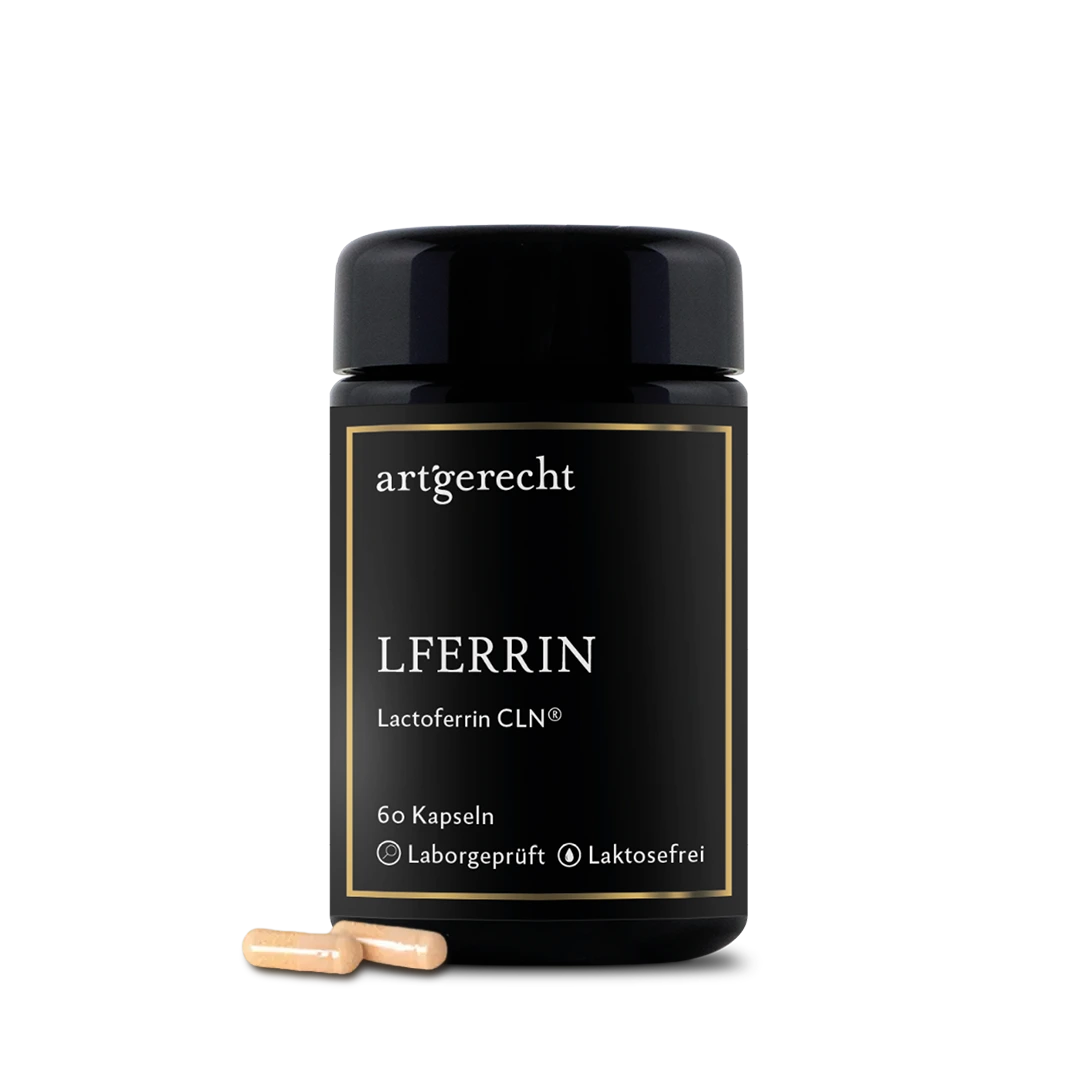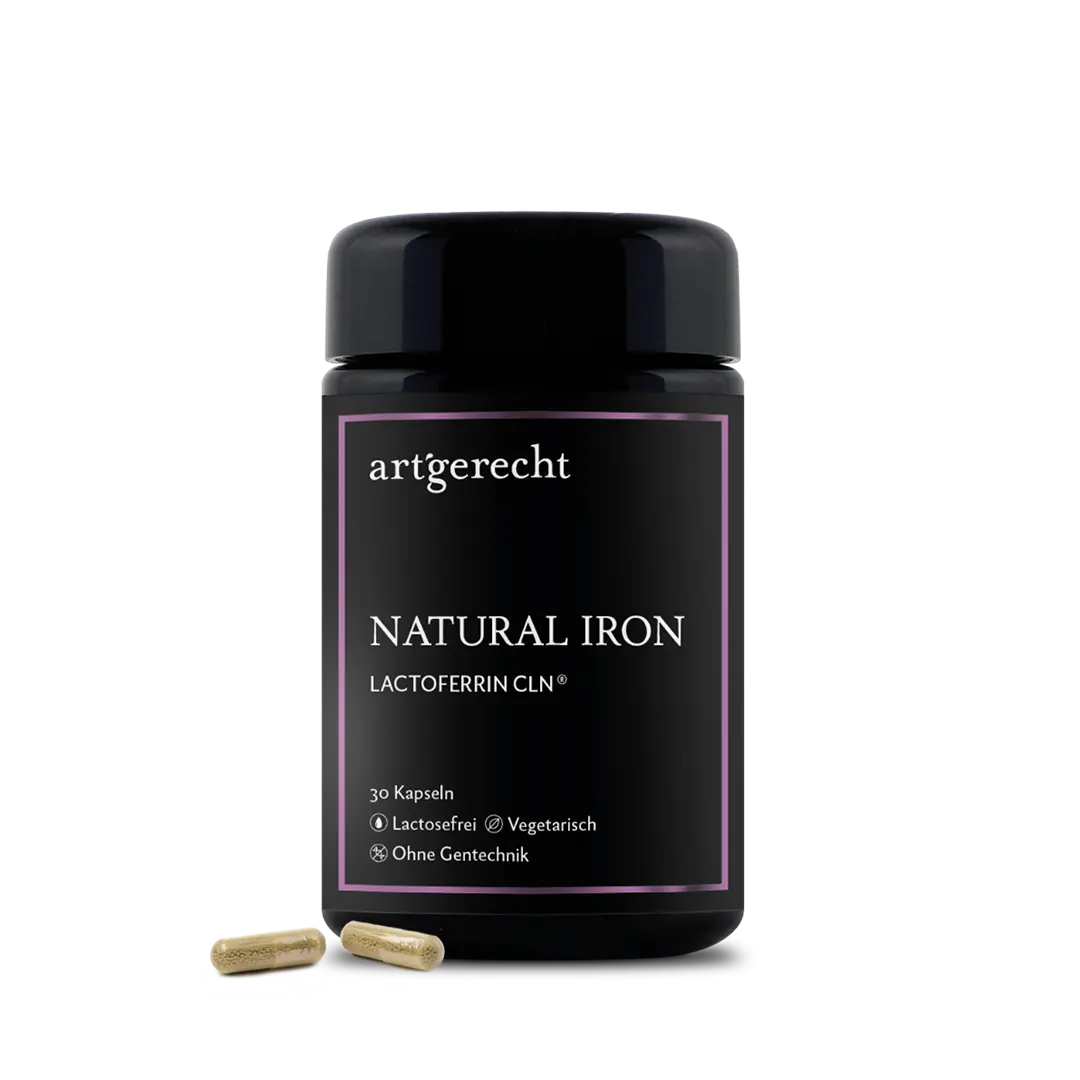- Why detoxify the body? The problem with our modern way of life
- Detoxification, purification or “detox”: what's behind it?
- The liver – our “metabolic-center”
- The gut as the center of health
- Natural right detox: healthy food & healthy lifestyle for new energy
- Helpful foods:
- Recipe: Fennel and spinach salad with orange and pomegranate
- Species-appropriate lifestyle: tips to detoxify the body
- Literature:
Physical and mental stress, environmental toxins or „modern“ nutritionändash; our body is exposed to a wide variety of stresses today. This means hard work for the liver, kidneys and intestines, as we try to get rid of harmful substances through these organs. To support this, we can carry out detoxification at regular intervals. Or we can go one step further and fundamentally adapt our lifestyle with simple changes.
Why detoxify the body? The problem with our modern way of life
Whether exhaust fumes, pesticides, hormones, pharmaceuticals, preservatives, flavor enhancers or daily stress - the body has to put up with a lot in our modern world. On the one hand, we burden it with so-called xenobiotics (Greek: substances foreign to life), i.e. substances foreign to the body. These are found, for example, in medicines, many convenience foods and drinks, but also in alcohol or nicotine. They are usually produced chemically or using biotechnological processes and their use continues to increase due to the many new developments in these areas.
On the other hand, persistent stress and overwork also act like „poison“ on the human body and impair our well-being. Consequences such as fatigue, lack of energy or susceptibility to infections are indicators of a weakened immune system. It therefore makes perfect sense to support our body in ridding itself of various toxins and, conversely, to be healthier again and have more energy.Our experts Matthias and Daniel talked about the topic of How do I detoxify my body” and show a species-appropriate way to fast in the following video.
There are now many options, making it all the more difficult to decide on the right form of detoxification. Terms such as detox, purify or detoxify basically mean the same thing - to cleanse the body of toxins from the inside out. By avoiding a unhealthy lifestyle and xenobiotics, we can improve our individual state of health. This can be done with the help of a detox cure, for example. Detox stands for detoxification: De (de-) tox (-tox).
There is much debate as to which method is most suitable. Some swear by abstaining from solid food and detoxifying the body by drinking a lot, e.g. green smoothies, green tea, special detox teas or plenty of warm water. Others eat a purely plant-based diet or use certain food supplements to support detoxification.
But is it enough to simply reduce your intake of toxins by changing your lifestyle? You can't avoid everything. isn't it just as important that our body can detoxify properly in the first place? Basically, it has the ability to cleanse itself and eliminate harmful substances via the lungs, liver, kidneys, intestines, skin, blood circulation and lymphatic system. If we support this endogenous ability, we are taking a big step in the right direction.
The liver – our “metabolic-center”
Our liver is our metabolic center with around 500 different individual tasks and is also essentially responsible for detoxification [1]. How good the liver is at this is referred to as adaptogenic capacity (from the English: to adapt). This means that the faster toxins can be converted and rendered harmless, the higher the individual's adaptogenic capacity. The higher this is, the more flexibly we can react to external stimuli and not only feel healthier, but are healthier too. Toxic substances therefore always become dangerous for humans when they cannot be metabolized and excreted quickly enough and occur in the body in excessive quantities. Thus, the detoxification performance of the liver is a key factor for our vitality and health.
The gut as the center of health
However, it is not only the liver that plays an important role in detoxifying our body. Our organism is resistant to the environment thanks to multifunctional protective layers: these include the skin and the mucous membranes in the mouth, lungs and the entire digestive tract. It is logical that we are protected by our skin. But the entire pathway of air and food also requires special protective barriers. These must be partially permeable in order to be able to absorb vital substances, but on the other hand not allow harmful substances or attackers to enter. As a protective barrier, the intestinal wall also represents the first line of defense of the immune system.[2]
The skin has the smallest part with about 2 m2. The lungs are considerably larger at more than 100 m2. However, with a surface area of well over 500 m2, the digestive tract, together with the oral cavity, forms the largest protective barrier and is of central importance for our health. Numerous immune cells are located directly behind the protective barrier of mucosal cells. If the barrier is damaged, foreign substances can penetrate and the immune system sounds the alarm. This increased permeability is called „leaky gut“ or „leaky gut“ or „löchrigen“ intestine. As a result of leaky sections of the intestine, more viruses, bacteria and their waste products (toxins), which are normally removed via the stool, can enter the body's circulation in an uncontrolled manner.[3][4]Damage to the protective barriers can be caused by poor nutrition and various environmental factors. This can trigger low-grade inflammation, which promotes the development of diseases.[5][6][7]
Natural right detox: healthy food & healthy lifestyle for new energy
For us, detoxing properly is not about doing without. Rather, it is a decision in favor of a variety of certain foods that are species-appropriate for us humans and a healthy lifestyle. In principle, of course, we recommend following a species-appropriate lifestyle in the long term. In this way, we avoid or limit the intake of certain toxins through food and strengthen the immune system as a whole.
However, if you don't want to give up certain foods completely, you can still do something good for yourself and detoxify your body at regular intervals. We think it is very worthwhile to pay special attention to the things we feed our body once a year for at least 30 days and to ensure that our diet is particularly species-appropriate. In addition, we then recommend targeted support with certain preparations. This helps our liver to detoxify and strengthens the impermeability of the intestinal barriers.
Proper nutrition
Detoxing in a way that is species-appropriate and successful in the long term means, above all, diversity. Because food diversity helps us to nourish the entire spectrum of healthy gut bacteria. Ideally, we should eat around 160 different foods per month. This sounds a lot at first - but if we use fresh herbs, spices, different vegetables and fruit, it's not that difficult. We also recommend reducing certain carbohydrates, such as those contained in sugar, cereals, potatoes, rice, pasta and the like. Instead, the use of naturally organically produced foods is advisable in order to keep the xenobiotic and toxin content as low as possible.
Foods that have a detoxifying effect
These foods are „food as medicine“. They contain a variety of secondary plant substances which, in combination, have a very specific effect on liver detoxification and should be regularly included in the diet.
| Tägliche Nahrungsmittel | Tägliche – daily dose |
| Onion | 150 – 250g |
| Garlic | min. 5g |
| Rhubarb | 50g |
| Artichokes | 1 piece (one bud) |
| Tomatoes | 250g |
| broccoli | 100g |
| Dark honey (pinostrobins) | 50g / week |
| Ginger | 10g |
| Turmeric | 3-7g |
| Fish | 1.5kg / week |
| Rocket or Löwenzahn | 50g |
In addition, there are other foods that have shown a very positive influence on detoxification performance. These are also many times more effective, especially in combination.
Helpful foods:
- Spinach with pine nuts
- Mushrooms
- Pine nuts
- Cocoa
- Ribbage
- Root vegetables
- Coffee
- Seafood
- Fenugreek
- Chinese cabbage
- Fermented vegetables
- cabbage
- seeds, especially almonds
- ./li>
- Apples
- Liquorice (without added sugar)
- Avocado
- Bitter melon
- Vegetables
- ;liver
- cinnamon
- shellfish, especially oysters
Drinking water, coffee (in moderation) and tea is particularly species-appropriate and healthy. All other „drinks“, whether organic fruit juice, soft drinks or alcoholic beverages, have a high calorie content and should be regarded as food that should be avoided during detoxification. In addition, the fructose contained in many drinks is harmful to the liver. Sugar substitutes also have negative effects on the body and are counterproductive to successful detoxification.
Recipe: Fennel and spinach salad with orange and pomegranate
Ingredients:
- 2 fennel bulbs (approx. 400 g)
- 1 organic orange
- 1 pinch of salt
- 2 tbsp white wine vinegar
- 2 tbsp olivesöl
- 1 tsp honey
- 1 pomegranate
- 100 g baby spinach
Preparation:
- Wash the fennel bulbs, halve and finely slice. Fillet the orange. To do this, cut off the entire peel of the orange so that the white skin is also removed from the flesh. Then remove the individual fillets between the separating membranes with a knife and collect the juice.
- For the salad dressing, mix the white wine vinegar with honey, salt and the juice from the orange. Then stir in the olive oil. Pour the dressing into a bowl with the fennel and orange segments and leave to infuse. In the meantime, peel the pomegranate like an orange and gradually remove the seeds from the individual segments.
- Wash the baby spinach, mix into the fennel salad and garnish with the pomegranate seeds.
Species-appropriate lifestyle: tips to detoxify the body
1. Intermittent fasting: the nutritional rhythm of our ancestors
Today, it is normal for us to have food available all the time and everywhere. Our ancestors, on the other hand, did not have it so easy: they first had to hunt and hunt down their food instead of just putting it in the shopping basket. Before humans settled down and learned to farm and raise livestock, there were always days without solid food. These involuntary fasting days may sound dramatic to us today, but they did our ancestors no harm at all. On the contrary: they relieved the body and made it more resilient. Intermittent fasting is therefore a good way to support the body's detoxification processes and is an essential part of a species-appropriate diet.
The implementation of intermittent fasting is very simple. Phases of normal food intake are followed by periods in which you don't eat anything. Ideally, you should have 19 meals per week. If there are 16 hours between meals (e.g. dinner at 6 p.m. and breakfast at 10 a.m.), we take the strain off our body.
Practical tips
- It is best to eat two meals a day. For example, skipping breakfast altogether is easy to implement in everyday life.
- At weekends or days off, combine breakfast and lunch with a delicious brunch to save a meal.
- We also recommend intermittent drinking: water or tea is best consumed in smaller quantities, but less frequently distributed.
2. Appropriate exercise
Exercise is a central element for humans and has an influence on the entire organism. Movement means life! As well as having a positive effect on the immune system, exercise is also an effective way of boosting our metabolism and helps to detoxify the body. Exercise is a key to removing toxins, as it stimulates our circulation, for example [8]. And sweating is a good way to remove toxins. This is not the only reason why exercise makes sense; it also increases metabolic flexibility, reduces fatty liver, and has cellular effects for better energy production and increased insulin sensitivity.
The best tips when it comes to exercise
- At least 10,000 steps per day
- If you do a lot of sitting, get one minute of active exercise every 30 minutes
- nüchterne Ausdauereinheiten. Depending on your fitness level: walking, cycling, hiking, running, etc. Preferably in the morning before breakfast or your first meal
- two to three strength training sessions per week. If this does not suit you, short high-intensity strength training sessions (HIT training) are a good option.
- Include yoga exercises to stretch the body and promote regeneration.
Literature:
- Grant, D. M. (1991). Detoxification pathways in the liver. Journal of Inherited Metabolic Disease, 14(4), 421–430. https://doi.org/10.1007/BF01797915
- Thayer, J. F. & Sternberg, E. M. Neural aspects of immunomodulation: Focus on the vagus nerve. Brain. Behav. Immun. 24, 1223–1228 (2010).
- Hawkesworth, S. et al; Evidence for metabolic endotoxemia in obese and diabetic Gambian women. Nutr. Diabetes 3, e83 (2013).
- Maes, M. et al; Depressions multiple comorbidities explained by (neuro) inflammatory and oxidative & nitrosative stress pathways. Neuro Endocrinol. Lett. 32, 7–24 (2011).
- Vos, T. et al; Global, regional, and national incidence, prevalence, and years lived with disability for 301 acute and chronic diseases and injuries in 188 countries, 1990–2013: a systematic analysis for the Global Burden of Disease Study 2013. Lancet 386, 743–800 (2015).
- Minihane, A. M. et al; Low-grade inflammation, diet composition and health: Current research evidence and its translation. Br. J. Nutr. 114, 999–1012 (2015).
- Cani, P. D. et al; Involvement of gut microbiota in the development of low-grade inflammation and type 2 diabetes associated with obesity. Gut Microbes 3, 279–288 (2012).
- Trefts, E., Williams, A. S., & Wasserman, D. H. (2015). Exercise and the Regulation of Hepatic Metabolism. In Progress in molecular biology and translational science (Vol. 135, pp. 203–225). https://doi.org/10.1016/bs.pmbts.2015.07.010

